Wild pigeons, with their graceful flight and gentle cooing, have long captivated people’s attention worldwide. These fascinating creatures can be found in urban landscapes, parks, and even our backyards.
While they are often seen as symbols of freedom and peace, taming wild pigeons can offer a unique opportunity to connect with these birds personally.
But how does one go about taming these free-spirited creatures? How can we develop a bond with wild pigeons that allows for mutual trust and understanding?
In this article, we will delve into the art of taming feral pigeons, exploring the importance of this endeavour and the numerous benefits that come with it.
By understanding their behaviour, creating a suitable environment, and employing patient and persistent techniques, we can embark on a journey of companionship and enrichment with these remarkable birds.
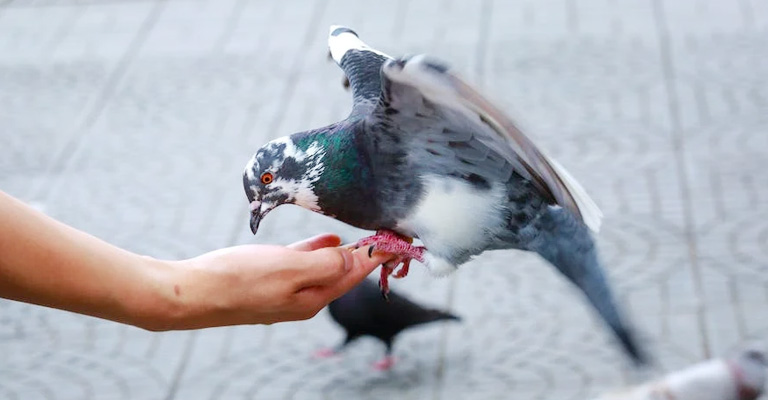
How To Tame Wild Pigeons?
Taming wild pigeons can be a rewarding experience that allows you to bond uniquely with these beautiful birds. You can gradually gain their trust and establish a connection by understanding their behaviour and employing gentle methods. This guide provides practical tips on how to tame wild pigeons effectively.
Understanding Wild Pigeons
To successfully tame wild pigeons, it is essential to have a solid understanding of their behaviour and characteristics. By delving into their social structure and communication methods, you can effectively identify pigeons that may be more receptive to taming.
Pigeon Behavior And Characteristics
Wild pigeons are intelligent and adaptable birds known for their homing abilities. They exhibit flocking behaviour and often establish roosting sites in urban areas. Pigeons are gentle and can display affectionate behaviour once they show trust.
Understanding their instincts, such as their need for security and access to food and water sources, will aid in creating a conducive environment for taming.
Social Structure And Communication
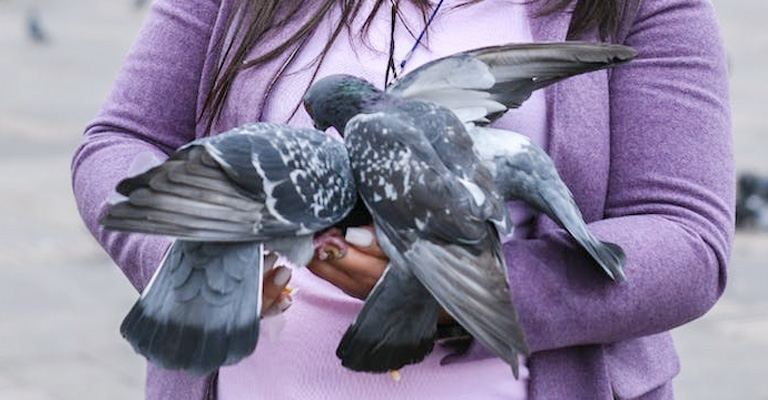
Pigeons thrive in social groups and have a structured hierarchy within their flocks. They use various vocalizations, body language, and visual cues to communicate. Observing their interactions lets you gain insights into their social dynamics and better comprehend their needs and preferences.
Identifying A Potentially Tamed Pigeon
While all pigeons have the potential to be tamed, some individuals may exhibit behaviours that indicate they are more open to human interaction. Look for pigeons that are curious, approachable, and willing to explore their surroundings.
These pigeons may be more likely to accept your presence and build a bond with you over time.
Creating A Suitable Environment
Creating a suitable environment is crucial when taming wild pigeons. By providing them with a safe and comfortable space, reliable food and water sources, and encouraging shelter and roosting areas, you can enhance their sense of security and attract them to your location.
Setting Up A Safe And Comfortable Space
Designate an area that is protected from predators and potential dangers. Ensure the space is quiet and free from disturbances that may frighten the pigeons. Utilize natural or artificial barriers to create a sense of enclosure, making the pigeons feel secure.
Providing Food And Water Sources
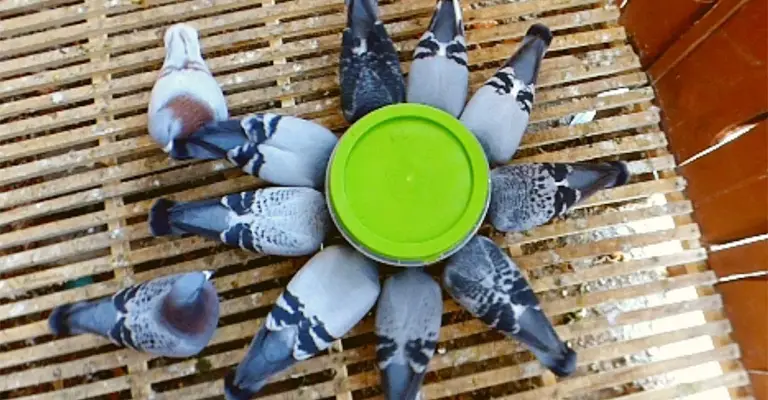
Offer a consistent supply of fresh food and water in easily accessible locations. Start with scatter feeding, spreading food across the designated area, and gradually transitioning to providing food in specific feeding stations.
Use a variety of grains, seeds, and other pigeon-friendly foods to cater to their dietary needs.
Encouraging Shelter And Roosting Areas
Install structures such as perches, ledges, or nesting boxes to provide pigeons with places to rest and seek shelter. These structures should be positioned strategically, considering the pigeons’ natural preferences for height and visibility.
Provide nesting materials like twigs or straws to encourage nesting behaviour.
Ensuring A Clean Environment
Regularly clean the feeding and roosting areas to maintain hygiene and prevent the spread of diseases. Remove any leftover food or debris that may attract pests or compromise the pigeons’ health.
Keeping the environment clean and well-maintained will contribute to the pigeons’ overall well-being.
Incorporating Natural Elements

Include elements like trees, shrubs, or bird baths in the environment to mimic natural surroundings. These elements can provide additional food, water, and shelter sources, attracting pigeons and making them feel more at home.
Building Trust
Building trust with wild pigeons is crucial for successfully taming them and fostering a positive bond. You can gradually gain their confidence and make them comfortable around you by employing patient and gentle methods.
Start the taming process by observing the pigeons from afar without making sudden movements or causing disturbances.
This allows the birds to become familiar with your presence without feeling threatened. Spend time quietly observing their behaviour and interactions within their flock.
Slowly Approaching The Pigeons
As the pigeons grow accustomed to your presence, approach them slowly and cautiously. Avoid sudden movements or gestures that might scare them away. Move at a pace that respects their comfort zone, allowing them to assess you as a non-threatening presence.
Establishing A Routine
Consistency is vital when building trust with wild pigeons. Establish a regular feeding and interaction routine. Pigeons thrive on predictability; a consistent schedule will make them feel more at ease and receptive to your presence.
Offering Enticing Food Rewards
Winning the trust of pigeons can be accelerated by providing enticing food rewards. Offer their favourite treats, such as seeds or grains, while maintaining a safe distance initially.
Gradually, hand-feed them the treats, associating your presence with positive experiences and rewards.
Gentle Voice And Body Language
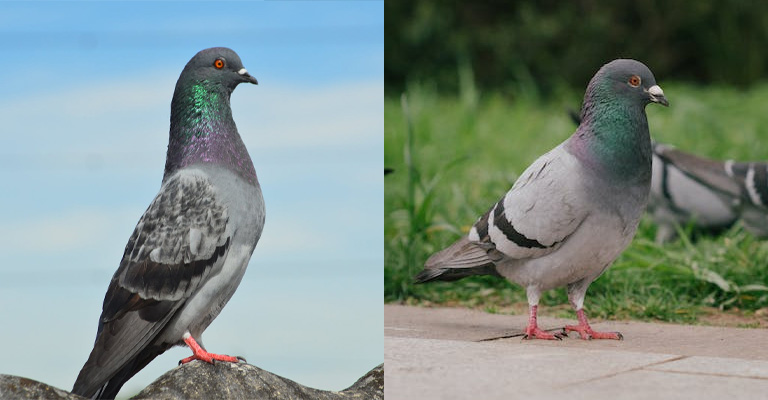
Use a soft and soothing tone when speaking around the pigeons. Avoid sudden or aggressive gestures, as these may frighten them. Let your body language convey calmness and non-threatening intentions.
Respecting Boundaries
Respect the pigeons’ boundaries and avoid forcing interactions. Give them space to approach you on their terms, reinforcing that your presence is non-intrusive and safe.
Patience And Time
Building trust with wild pigeons takes time and patience. Every bird is different; some may take longer to acclimate to human presence than others. Be prepared for setbacks and progress at their pace.
Slowly Reducing The Distance
Start by maintaining a comfortable distance from the pigeons and gradually moving closer. This gradual approach allows the pigeons to acclimate to your presence without feeling threatened.
Hand-Feeding And Positive Reinforcement
Offer food from your hand to the pigeons, allowing them to associate your presence with a positive experience. Use gentle, calm movements and avoid sudden gestures that may startle them.
Positive reinforcement, such as praising or offering treats when the pigeons exhibit desired behaviours, further encourages their trust and cooperation.
Avoid Forcing Or Stressful Situations
Never force a pigeon to interact or be touched if they show discomfort or resistance. Respect their boundaries and allow them to progress at their own pace. Stressful situations can hinder the taming process, so creating a calm and nurturing environment is essential.
Target Training And Clicker Training Methods
Target training involves using a target stick or object to guide pigeons and reinforce desired behaviours. Clicker training utilizes a distinct sound, such as a clicker, to mark desired actions and facilitate learning.
Pigeons learn to repeat the steps that lead to positive outcomes by associating the click or target with rewards.
Teaching Basic Commands And Tricks
Start with simple commands like “step up” or “come here,” using positive reinforcement and rewards to encourage pigeons to comply. Gradually introduce more complex tricks like turning in a circle or retrieving objects.
Break the training process into small steps and reward incremental progress for keeping pigeons engaged and motivated.
Encouraging Positive Behaviors And Discouraging Negative Ones:
Reward pigeons when they exhibit positive behaviours like coming when called or perching on your hand. Similarly, discourage negative behaviours, such as excessive pecking or aggression, by withholding rewards or redirecting their attention.
Consistency, patience, and positive reinforcement are vital to shaping the desired behaviours and discouraging undesirable ones.
Maintaining The Bond
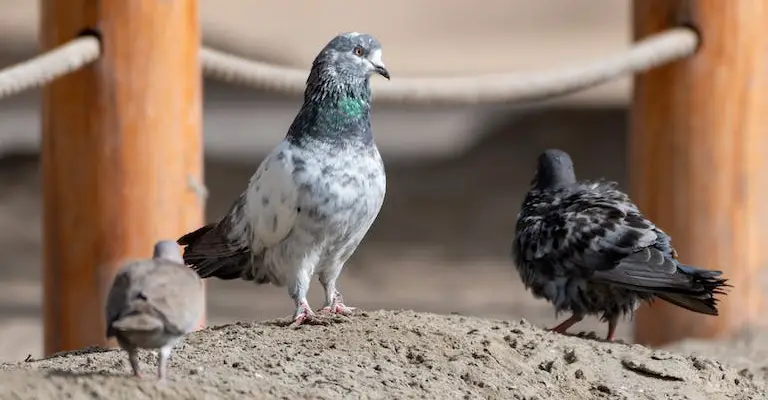
Once you have successfully tamed a wild pigeon, you must continue nurturing your established bond. Maintaining regular interaction, providing companionship, and ensuring the well-being and health of your pigeon are crucial for a long-lasting and fulfilling relationship.
Regular Interaction And Feeding:
Regularly spend time with your pigeon, engaging in gentle interactions such as whispering or offering treats. Consistency in your presence will reinforce the bond and trust you have developed.
Additionally, maintain a consistent feeding schedule to meet their nutritional needs and support positive associations with your company.
Providing Companionship And Stimulation:
Pigeons are social creatures and thrive with companionship. Consider introducing your tamed pigeon to other pigeons or providing them with a mirror for visual stimulation. Engage in gentle play or training sessions to keep their minds active and create a sense of fulfilment.
Ensuring The Pigeon’s Well-Being And Health:
Regularly monitor your pigeon’s health by observing their behaviour, appetite, and droppings. Provide a clean and comfortable living environment, ensuring proper ventilation and protection from extreme weather conditions. Schedule regular visits to an avian veterinarian for check-ups, vaccinations, and necessary medical care.
Promoting Mental And Physical Enrichment:
Offer a variety of perches, toys, and puzzles to keep your pigeon mentally stimulated. Encourage flight within a safe space to maintain their physical health and natural behaviours. Additionally, provide opportunities for bath time or dust bathing, essential for their plumage and overall well-being.
What Is The Best Way To Tame A Wild Pigeon?
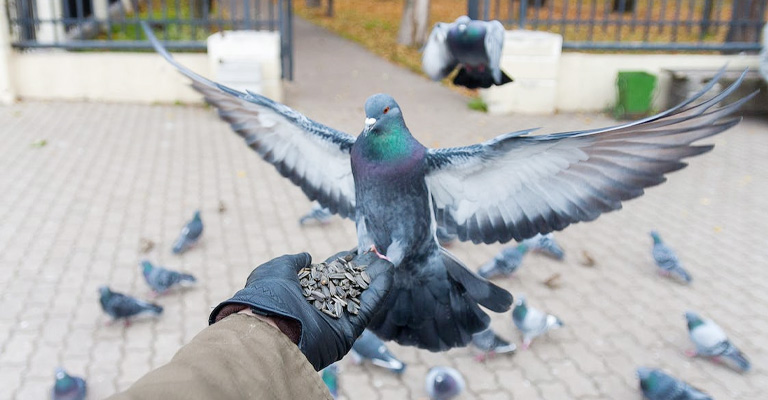
Taming a wild pigeon refers to gradually gaining the bird’s trust and acclimating it to human presence. Here are some tips on the best way to tame a feral pigeon:
Observation and Patience
Start by observing the pigeon from a distance to understand its behaviour and routines. Patience is critical, as it may take time for the pigeon to become comfortable with your presence.
Consistency
Regular visits and consistent interactions are essential to gain a wild pigeon’s trust. Aim for daily or frequent visits during the same time of day. This helps establish a routine and familiarity, making the pigeon more receptive to your presence.
Gentle Body Language
Maintain a relaxed and non-threatening posture when near the pigeon. Avoid making sudden movements or gestures that may startle the bird. Slow and deliberate movements help convey a sense of calm and trustworthiness.
Conditioning Positive Associations
Associate your presence with positive experiences. Provide treats or favourite foods to the pigeon during interactions. This helps create a positive association between you and positive rewards, further strengthening trust.
Avoid Capture
It’s important to note that the goal is to tame the wild pigeon and build trust, not to capture or confine it. The pigeon should be free to come and go as it pleases. Restricting its freedom may cause stress and hinder trust-building efforts.
Remember that timing a wild pigeon requires time and patience. Depending on the individual bird’s temperament and previous experiences, the process may take weeks or even months.
Always prioritize the well-being and comfort of the pigeon, allowing it to make choices and build trust at its own pace.
FAQs
Yes, any pigeon has the potential to be tamed, although individual temperament and experiences may influence the process.
The time required to tame a wild pigeon can vary significantly, ranging from a few weeks to several months, depending on the bird’s trust level and previous experiences with humans.
If a pigeon is reluctant to eat from your hand, continue to offer food regularly while maintaining a non-threatening presence. Eventually, the bird may overcome its hesitation.
Releasing a tamed pigeon back into the wild is possible. Still, it should be done thoughtfully and cautiously, ensuring the bird can survive in its natural habitat.
Laws regarding keeping and taming wild pigeons may vary depending on your location. It is essential to familiarize yourself with local regulations to ensure compliance.
Conclusion
Taming a wild pigeon requires time, patience, and a deep understanding of its behaviour. By following the guidelines outlined in this article, you can establish a harmonious bond with these remarkable creatures while respecting their wild nature.
Remember, each pigeon is unique, and the taming process may differ from bird to bird. With care and dedication, you can embark on a rewarding journey that enriches both your life and the life of the pigeon you choose to tame.